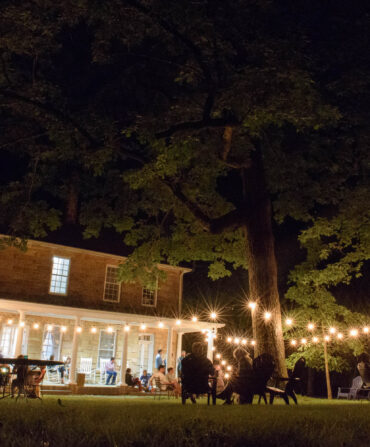Think of the disco era, and Birmingham, Alabama, probably isn’t the first place that comes to mind. But the city provided a crucial piece of inspiration for Saturday Night Fever, the hit 1977 film that helped make disco a worldwide craze. The illuminated dance floor where John Travolta’s character, Tony Manero, struts, thrusts, and finger-points is directly modeled on one in The Club, a private supper club perched high on Red Mountain overlooking downtown.
“When we were preparing Saturday Night Fever, the production designer, Charles Bailey, and I scouted nearly every disco in the New York City area,” says John Badham, Saturday Night Fever’s director. “And no matter how fancy or weird they were, they all had one thing in common: The floors were worn-out hardwood or even dirty concrete.”
That’s when he remembered The Club in Birmingham, with its circular plexiglass dance floor illuminated from beneath with red, green, blue, and yellow bulbs. According to Cassie McCay, the venue’s member relations manager, the dance floor has been a “definite staple for The Club” since it opened in 1951.

Photo: Courtesy of The Club
An exterior view of The Club.

Photo: Courtesy of The Club
A recent view of The Club’s dance floor.
“My parents would take us on very special occasions, like my birthday, up to The Club for dinner,” says Badham. His family moved when he was two years old from the United Kingdom to Birmingham, where Badham’s younger sister, Mary—who, incidentally, played Scout in the 1962 film To Kill a Mockingbird—was born. “My mother loved to dance and had made me take lessons, so we would go out onto the beautiful lighted dance floor and have a great time,” he says. “That image stuck with me many years later.”

Photo: Courtesy of The Club
A vintage snapshot of The Club’s dance floor, an attraction since the venue’s establishment in 1951.
For Saturday Night Fever, Badham’s team took over a disco in Brooklyn, the 2001 Odyssey, and imported a custom-built version of the The Club’s floor—with a few upgrades. This new disco dazzler flashed in rhythm to the music and was big enough to hold fifty to sixty dancers. Though the floor cost the low-budget film upwards of $15,000, it would pay for itself in spades. Saturday Night Fever enjoyed huge box-office success, helped launch Travolta’s career, and spawned a best-selling soundtrack featuring some of the disco era’s biggest hits.
Next year marks the fortieth anniversary of the blockbuster, which, according to Badham, will be commemorated with a re-release featuring restored footage and deleted scenes. Badham now teaches film and media arts at Chapman University in California, but his movie never fails to take him back to those evenings at The Club. “Every time I watch the film,” he says, “I think of Birmingham with the Vulcan watching over everyone.”
Badham hopes that association works the other way around as well. “Perhaps few of The Club’s patrons who dance here would ever consider themselves to have much in common with disco fever,” he wrote in a letter now hanging inside The Club. “But their dance floor surely does!”

Photo: Courtesy of The Club
Saturday Night Fever director John Badham’s letter to The Club’s members.








